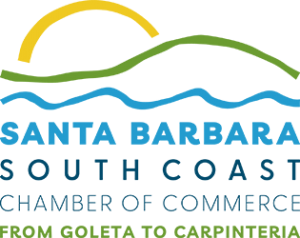Three area chambers of commerce have joined forces to create the new Santa Barbara South Coast Chamber of Commerce.

The Chamber of the Santa Barbara Region, the Goleta Chamber of Commerce and the Carpinteria Valley Chamber of Commerce embraced a unified approach in order to better serve the business community in the wake of COVID-19’s impact on the economy.
“We believe this organization will fill the void that has been exposed by the economic meltdown and be a more effective advocate for our issues and concerns,” the Santa Barbara South Coast Chamber website says.
“The leadership from all three organizations are excited for the immense potential of a regional chamber to be a voice for business,” said Kristen Miller, president and CEO of the consolidated organization.
The three organizations came together by unanimous vote in July following two earlier unsuccessful merger attempts.
“The current economic and cultural climate we find ourselves in calls for change, innovation and unity,” said Stephanie Armstrong, who transitioned from interim executive director of the Santa Barbara chamber to the new organization’s chief marketing officer.
The consolidated approach will make it easier for the more than 1,100 members to take advantage of resources including virtual events to help with networking and marketing.
“Our organization is new, but our histories are deep,” Miller said. “By working together, we can bring a new level of connectedness, vitality and strength to our local economy and our communities.”
Dual-County Workforce Development
Workforce planning and development will be conducted more holistically across San Luis Obispo and Santa Barbara Counties under the creation of a new state-designated regional planning unit.
The South Central Coast regional planning unit brings the Workforce Development Boards in both counties into a new partnership to more efficiently serve the regional needs of the business community and workforce.
With regionalism in mind, the designation recognizes that businesses and workers operate across local boundaries and considers factors such as commute patterns, industrial composition, labor force conditions and geographic boundaries.
The two boards, which are adding at least one new position to increase capacity, are moving ahead with forming short- and long-term goals and evaluating regional workforce project options.